
from Holy Island to the Isle of Iona
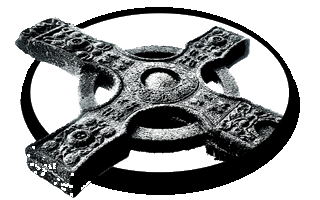

4 October 2010
The North Atlantic Arc Home
| September | /October/ | November |
| S | M | T | W | T | F | S |
| 27 | 28 | 29 | 30 | 1 | 2 | |
| 3 | 4 | 5 | 6 | 7 | 8 | 9 |
| 10 | 11 | 12 | 13 | 14 | 15 | 16 |
| 17 | 18 | 19 | 20 | 21 | 22 | 23 |
| 24 | 25 | 26 | 27 | 28 | 29 | 30 |
| 31 | 1 |
 |
|
Monday 4 October 2010--Spend some time walking around Denholm this morning, trying to get a sense of whether it would be worth
returning here. It's a nice enough place, and I enjoyed my stay, but I don't feel anything compelling about it. The most interesting
thing I see is the towers of a small suspension bridge over the Teviot, with an archway just large enough for pedestrians, possibly
small horses. The span is long gone. It seems rather overengineered for what it was, a footbridge across the river. If I had to guess,
I'd say it was meant to facilitate the commute of some early industrial workers.
I phone ahead to my lodgings in Berwick-upon-Tweed. Am mildly annoyed to hear that I've been relocated to another B&B for some unclear reason; moreso when I phone the new place and find that the tariff is a fair chunk higher than what I'd booked for. I'm tempted to decline the room, but can't face the prospect of hunting down something else. There's been a bit too much of that already. The phonebox on Denholm green is in a sorry state, much of its glass broken, and faded paint peeling. There is a notice inside stating that the box no longer supports itself, and service is to be discontinued; but, given popular sentiment that the traditional red phoneboxes are a part of British culture and history, the box is offered for adoption, for a nominal fee, to any party willing to maintain it as a nonfunctional monument. Private subsidy of service is another, separate, possibility. As elsewhere in the civilized world, mobile phones are rendering these things obsolete. I've been dependent on public phoneboxes when traveling here, and I'm sure other travelers are, too, but it's getting increasingly difficult to find one when I need it. Too often I find one vandalized, out of order, or simply abandoned by British Tel. I can't help but think of MacIntyre on Ferness pier, pumping coins into the phone in a vain attempt to stay in contact with the outside world. It's a quaint image, becoming quainter by the minute. The irony, of course, is that I'm finding it difficult to make connections, even as the world is becoming more and more connected. I have been reluctant, over the years, to embrace each successive wave of technology as it comes--home computer, cell phone, and now smartphones have each in turn had me questioning the purpose and need. Inevitably, I find I can't live without a technology I thought useless months before I bought in, at the same time resentful of the obsolescence of the old technology. My grandfather could not see why he'd want a phone in his home, something I've always taken for granted; the kids now can't, either, for an entirely different reason. All of that I will sort out, I guess, as the 21st century drags me kicking and screaming along. I really oughtn't complain--the ubiquity these days of wi-fi hotspots in the UK, even in the remoter parts of Scotland, stands in marked contrast to the situation just a few years ago. All I know right now is that the venerable red British phonebox is starting to fail me, and the feeling is not unlike watching a parent's inexorable decline. You want someone, somehow, to stop it, but deep down, you know it's not remotely possible. East I go to Jedburgh, to see the abbey. I've been there twice before, but both times late in the afternoon, after closing. A real visit is more rewarding than I expected; it's reminiscent of Rievaulx, if not perhaps quite so majestic. Its setting is problematic-- very impressive from below, to the south and east; but the western front, normally the awe-inspiring approach for any such church, faces into an upward slope, diminishing its impact. But that's a quibble--on the whole, it's a marvelous site. Then I'm off on a photographic scavenger hunt--Dryburgh Abbey, the Wallace Monument, Scott's View, Smailholm Tower. Intend to skip Dryburgh, as I've been there before and am now running short of time, but I can't resist. It's the most beautifully set of the Borders abbeys, the only one without a town grown up around it. By contrast, the Wallace monument is so placed that it can't be properly viewed from anywhere. Frankly, it's just as well--it's a hideous thing. Sir Walter Scott was fond of Dryburgh, and is in fact interred there. Along the road from Abbotsford, his home, there is a viewpoint overlooking the three peaks of the Eildon Hills. It's said that the horse drawing his casket stopped here unbidden, so habituated was it to its master taking time to admire the view. I arrive at Smailholm Tower just after closing, but I don't want to go in, anyway. Instead, I circle all around it, looking for photographic inspiration. In its prime, it would have had a minor village surrounding it, but it now stands dramatically alone on its rocky knoll. It's getting late now, and my intended visit to Greenknowe Tower, a ruin similar in structure to Smailholm, turns into a drive-by. I must cross the border again into England, and want to do so via the Union Chain Bridge, an early example of suspension bridge technology. I am confused by the road signs in Swinton, and stop to check the map three times before getting the right road out. Finally get sorted, and after squeezing the little Skoda between the stone bollards that prevent heavier traffic from using the bridge, I see the setting sun dead-center in the opening of the tower behind me, in my rear-view mirror. It feels a bit like observing the solstice at Stonehenge or Maes Howe. Arrive at dusk and settle in. The affable fellow at the B&B puts me at ease, and recommends a pub, the Barrels. It's a pointedly quirky place, with two rustic stools and a barber chair at the bar, and various odd photos and signs on the walls. "Hippies use side entrance", reads one. There are only a few of us gents in attendance, and I am typically buried in my journal, but the bartender's explication to his audience of Broad Berwick, the local dialect, draws me in. It naturally seems to sit between Scots and Geordie, but has a good deal of its own invention. We are in near hysterics at the monologue, a performance of which George Carlin would surely have appreciated. Next |
 |
Denholm Green
 |
Teviot Crossing
 |
Adoption Notice
 |
Jedburgh Abbey
 |
 |
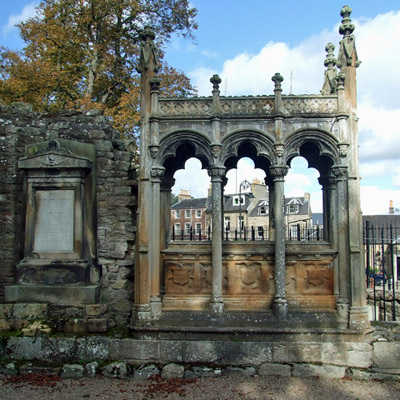 |
Jedburgh Abbey
 |
Jedburgh Abbey
 |
Jedburgh Abbey
 |
Jedburgh Abbey
 |
Jedburgh Abbey
 |
Jedburgh Abbey
 |
Jedburgh Abbey
 |
Jedburgh Abbey
 |
Dryburgh Abbey
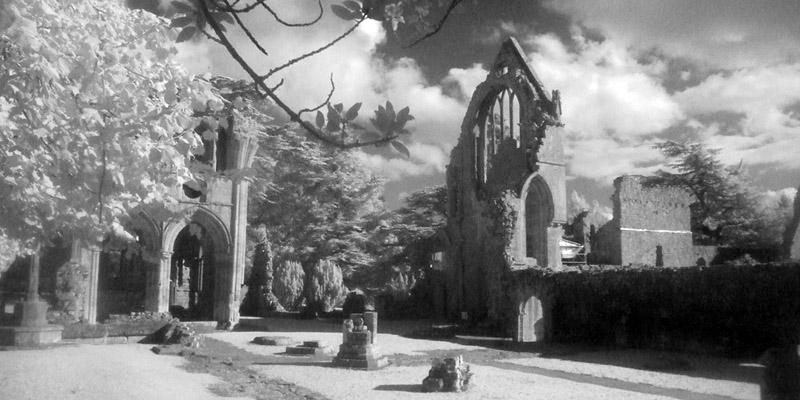 |
Dryburgh Abbey
 |
More Cheese, Gromit?
 |
Scott's View
 |
Smailholm Tower
 |
Smailholm Tower
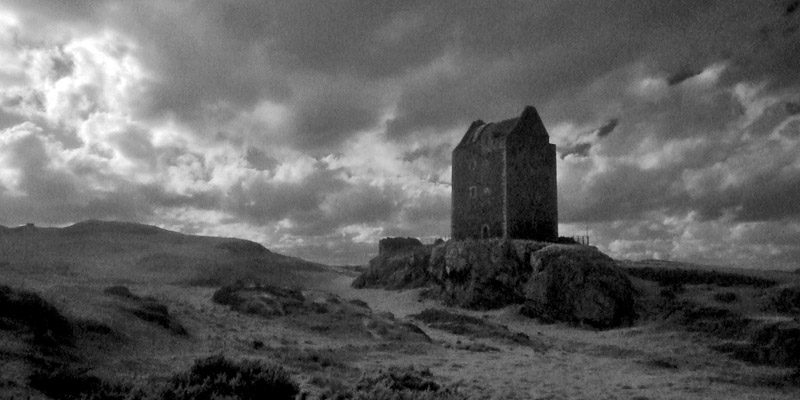 |
Smailholm Tower
 |
Smailholm Tower
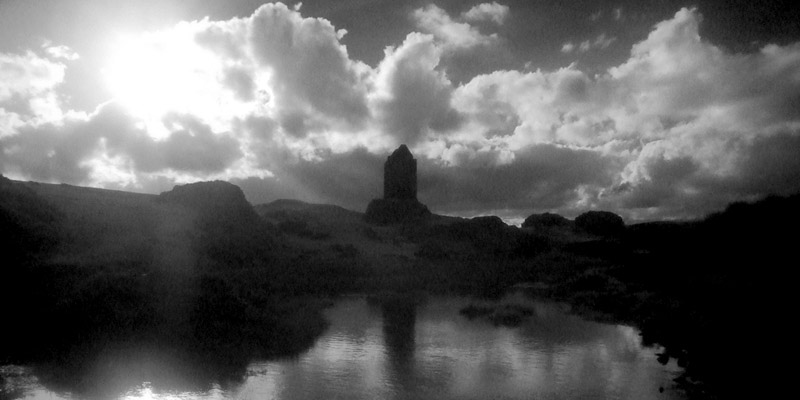 |
Smailholm Tower
 |
Smailholm Tower
 |
Union Chain Bridge
 |
Union Chain Bridge
Next
| September | /October/ | November |
| S | M | T | W | T | F | S |
| 27 | 28 | 29 | 30 | 1 | 2 | |
| 3 | 4 | 5 | 6 | 7 | 8 | 9 |
| 10 | 11 | 12 | 13 | 14 | 15 | 16 |
| 17 | 18 | 19 | 20 | 21 | 22 | 23 |
| 24 | 25 | 26 | 27 | 28 | 29 | 30 |
| 31 | 1 |
The North Atlantic Arc Home

Mr Tattie Heid's Mileage
Results may vary